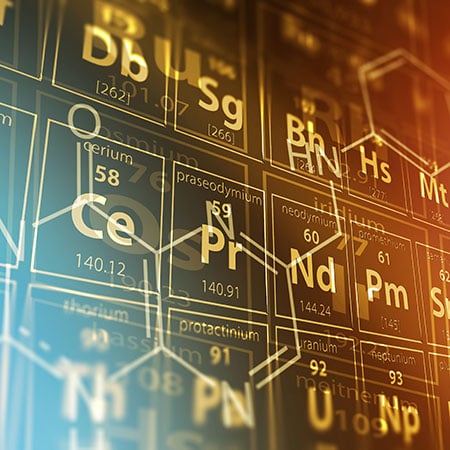Chemical / Composition Identification
Commonly employed techniques to non-destructively determine the composition of an unknown sample are X-ray fluorescence (XRF) , X-ray diffraction (XRD) and Raman spectroscopy.
X-ray fluorescence provides elemental composition information for boron (B) through uranium (U) from parts-per-million (PPM) to percent (%) levels. Using fundamental parameters (FP) algorithms, XRF can provide quantitative analysis without the need for reference standards.
X-ray diffraction provides phase composition identification and can distinguish the major, minor, and trace compounds present in a sample. XRD analysis includes the mineral name of the substance, chemical formula, crystalline system, and reference pattern number from the ICDD International database. Standardless quantitative information can also be obtained from XRD using Rietveld Analysis.
Handheld Raman provides emergency responders, law enforcement agencies and the military with the industry’s most comprehensive tool for chemical identification, CBRNe detection, and narcotics classification in a fast and simple handheld form. Faced with increasingly sophisticated chemical threats and global drug trafficking, handheld Raman devices provide users with confidence to: detect explosive threats quickly and accurately in harsh environments, identify a wide range of narcotics and illegal drugs, and respond to suspicious hazardous materials that risk public safety.

Rigaku recommends the following systems

Contact Us
Whether you're interested in getting a quote, want a demo, need technical support, or simply have a question, we're here to help.
